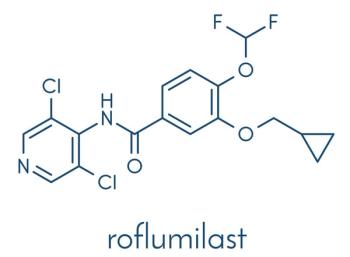
Mongolian Spot- or Not?
My patient is a 3-year-old girl who since birth has had a dark area that looks likea bruise on her left buttock (Figure). Her mother has been told it is a mongolianspot; however, the child is blond and blue-eyed and does not have an ethnic heritagetypically associated with that condition.
My patient is a 3-year-old girl who since birth has had a dark area that looks likea bruise on her left buttock (Figure). Her mother has been told it is a mongolianspot; however, the child is blond and blue-eyed and does not have an ethnic heritagetypically associated with that condition. In addition, the lesion feels hardenedcompared with surrounding tissue. Are the findings in this patient consistent witha diagnosis of mongolian spot?---- Sharon Arnold, FNP-CWinfield, Kan
Clinically, the differential diagnosis here includes mongolian spotand morphea (localized scleroderma). The feature that favorsmongolian spot is the presence of the lesion at birth (morphea isan acquired condition). However, the fact that the involved skinis "hardened" strongly suggests morphea; this entity presents asan indurated plaque, whereas mongolian spots are macules and therefore notraised or hard. Typically, mongolian spots are noninfiltrated, ill-defined bluishmacules that are present at birth. They are found most frequently in AfricanAmerican and Asian children but occasionally occur in whites as well. Theyusually arise in the lumbosacral area but can appear elsewhere.Thus, given the clinical picture of an indurated area with a bruised appearancethat has been present since birth, the definitive diagnosis is notclear. A small punch biopsy might be helpful.---- Caron M. Grin, MD
Associate Professor of Dermatology
University of Connecticut Health Center
Farmington
Newsletter
Enhance your clinical practice with the Patient Care newsletter, offering the latest evidence-based guidelines, diagnostic insights, and treatment strategies for primary care physicians.






















































































































































































































































































